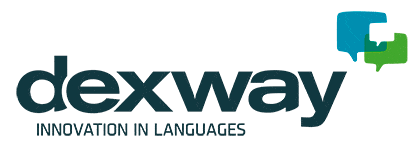Classroom education 3.0 represents a constantly evolving learning environment, where technology plays a crucial role in the acquisition of knowledge. In this context, the implementation of blended learning becomes a fundamental strategy to make the most of the advantages of online and face-to-face education in the classroom. In this article, as language e-learning experts with experience in online, face-to-face and blended learning as well as with language laboratories, we will explore how to design and implement an effective blended learning approach for classroom education 3.0.

What is blended learning?
Blended learning, or mixed learning, is a pedagogical approach that combines elements of face-to-face and online education. This approach allows students to access content and resources through educational platforms, while participating in face-to-face activities with their peers and teachers. This combination offers a balance between flexibility and personal interaction, making it a powerful strategy for language learning in classroom education 3.0. Various studies have indicated that secondary-age students thrive in a self-learning environment.
Steps to implementing blended learning in classroom education 3.0
Assess needs and objectives: Before implementing any blended learning approach, it is essential to understand the needs of the students and the objectives of the course. What language skills should they acquire? What are the resources available? Setting clear goals is essential. For this reason, Dexway language courses are structured by objectives aligned with the Common European Framework of Reference (CEFR).
- Technology selection: Identifying the right technological tools is crucial. Learning management platforms, interactive applications, video conferencing and multimedia resources can enrich the learning experience.
- Design interactive content: Create engaging and effective online content such as lessons, videos, exercises and tests. Make sure it is accessible from anywhere and on any device. Dexway In Person courses allow you to work with the Dexway pedagogical team and set the order of lessons so they fit your program, as well as to add your own extra material.
- Encourage participation: Promote interaction between students and with the teacher. Online forums, real-time discussions and collaborative tasks are essential elements of blended learning.
- Personalisation: Adapt content and activities to individual student needs. Flexibility is one of the key advantages of blended learning.
- Constant feedback: Provide regular feedback to students to guide their progress and improve performance. Use technology for continuous monitoring and evaluation.
- Evaluate and adjust: Monitor the effectiveness of your blended learning approach over time. Make adjustments based on student feedback and performance.
Benefits of blended learning in classroom 3.0
The blended learning approach offers a wide variety of advantages for classroom education 3.0, which go beyond flexibility and interaction. Below, we’ll explore in more detail the benefits that best fit today’s classrooms:
#1 Improved knowledge retention
Blended learning combines multiple learning methodologies, which in turn reinforces knowledge retention. Students can watch, listen, read and practise in different ways, which helps consolidate their understanding of concepts and skills.
#2 Greater autonomy and self-discipline
By allowing students to access online materials autonomously, a hybrid method encourages self-discipline and self-regulation. Students need to manage their time and balance their academic and personal responsibilities, which develops valuable life skills.
#3 Access to updated resources
Online content can be kept up to date more easily than traditional textbooks. This is especially important in language teaching, where evolving language and cultural trends require up-to-date and relevant content.
#4 Inclusivity
Blended learning can make education more inclusive by allowing students with different learning styles and particular needs to access resources that suit their preferences and requirements. Students with disabilities can also benefit from online assistive technology.
#5 Personalised feedback and progress tracking
Educational platforms offer the possibility of detailed monitoring of student progress, such as Dexway Analytics in the Dexway LMS. Teachers can use data and analytics to provide more personalized and targeted feedback, contributing to more effective learning.
#6 Cost reduction
Although the initial investment in technology and content development can be significant, in the long term, blended learning can result in reduced costs. The reduction in expenses such as printed materials, transportation and maintenance of physical infrastructure can be considerable.
#7 Greater motivation and commitment
In classroom education 3.0, the variety of approaches and interactivity inherent to blended learning often increase student motivation. The ability to access engaging online resources and collaborate on stimulating projects can keep students engaged in their learning process.
#8 Development of technological skills
In an increasingly technology-oriented world, b-learning gives students the opportunity to develop the digital and information management skills essential for the 21st century. This is why continuous training for teachers in order to stay up to date is of the utmost importance.
#9 Preparation for lifelong learning
By getting students used to learning through multiple channels and adapting to new technologies and approaches, this training methodology fosters a lifelong learning mindset, which is crucial in a constantly changing world.
Education in the 3.0 classroom has many tools and blended learning is one of the most effective. The successful implementation of this methodology requires a strategic approach and careful planning. This approach offers language teachers a unique opportunity to present their classes effectively and flexibly. As experts in e-learning for languages, we know that it is essential to adapt to this ever-evolving classroom and harness the power of technology to optimise the learning experience for students. By following these steps and taking advantage of the benefits of blended learning, we will be one step closer to achieving the objectives of language teaching in the 3.0 classroom.
You may also like:




